Coached is a heart rate training programme to track, optimise and enjoy your training and Ben Pulham, 36, a former professional triathlete from New Zealand, is the head coach and founder of the programme.
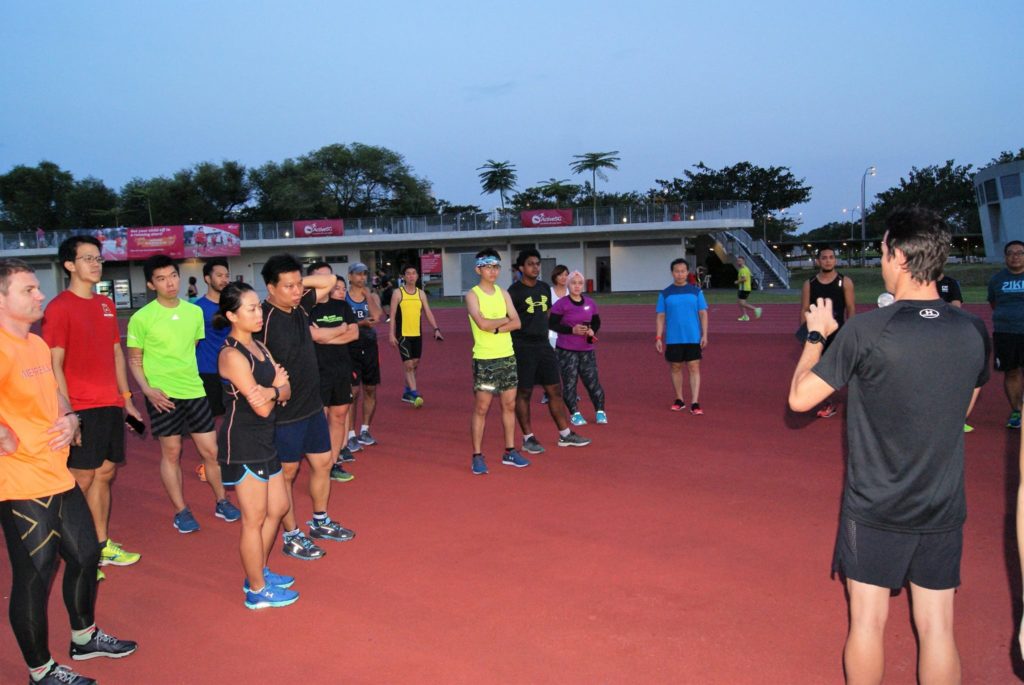
Coached and Under Armour Run Crew have teamed up for SCSM
For the Standard Chartered Singapore Marathon (SCSM) taking place on the 3rd of December this year, Coached and the Under Armour Run Crew have teamed up on a 16-week running training programme to prepare runners for their race, be it the Full Marathon, Half Marathon or the 10km Run. The sessions take place every Thursday at the Kallang Practice Track.
And at a recent Thursday session, Ben had dished out plenty of squats to runners who had been present at the training.
After a simple warm up, our session had started with doing 10 squats, then running one lap of the 400m track and then doing 10 squats again. A 30-second break followed, before repeating the cycle again.
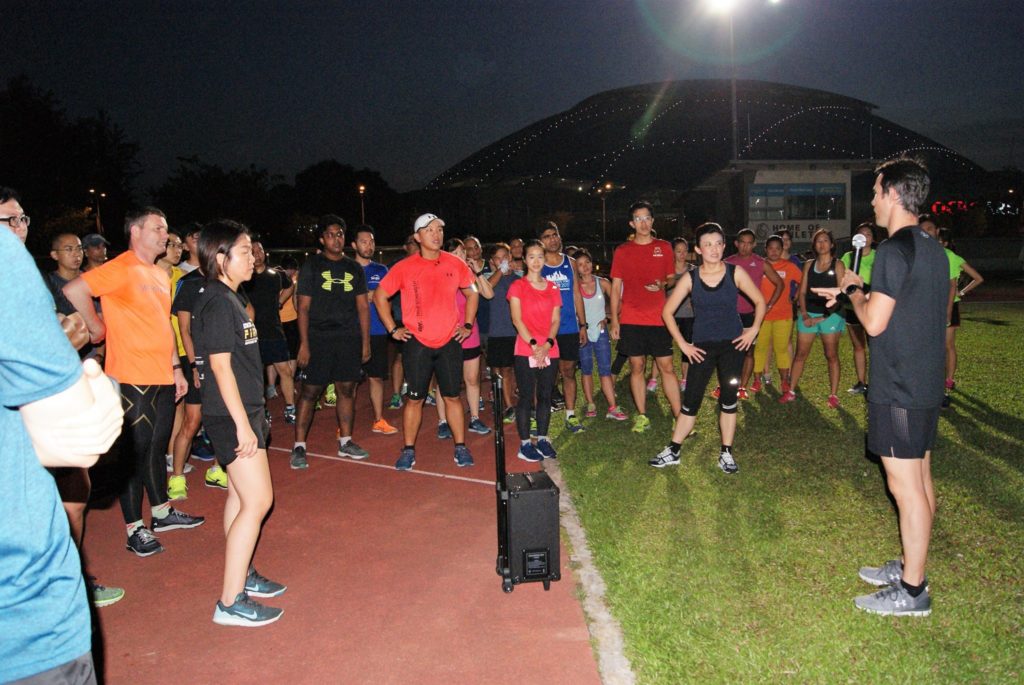
We had kept this up for more than 30 minutes.
Legs should feel heavy
By the end of the session, my legs had really felt like lead due to all the squats, even though the running mileage had been between about 5km-6km.
This feeling in the legs is normal according to Ben and in fact, is how the legs should feel. In a post-session debriefing, Ben had explained, “Your legs should feel heavy. If you have done it and you do not feel heavy, then it is most likely that you did not have the technique right for the squats.”
Strength sets are supposed to load the legs
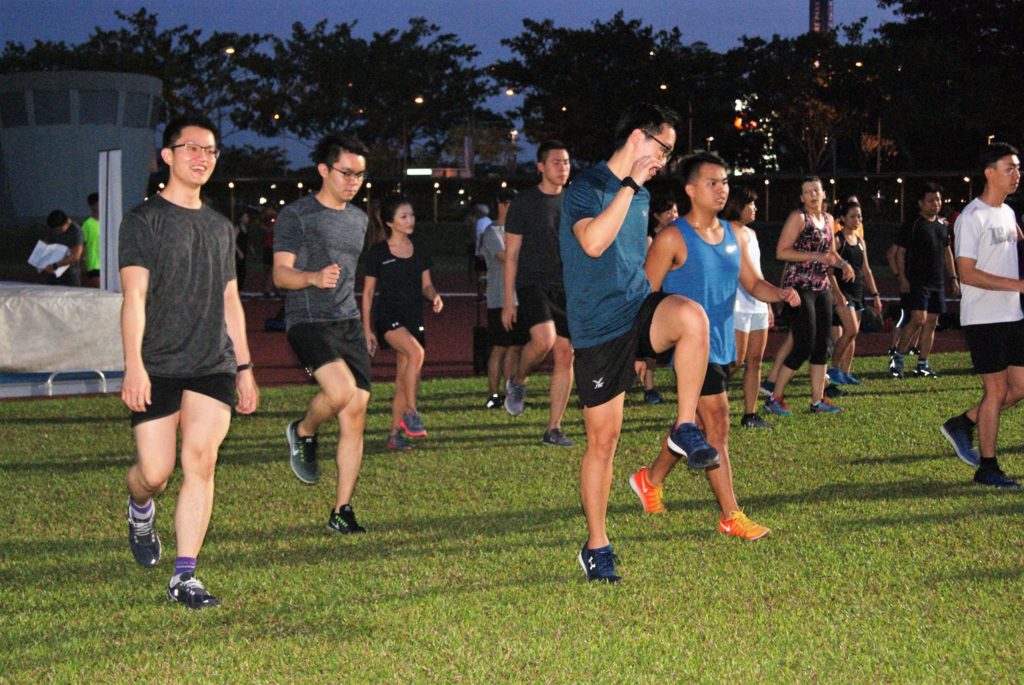
Doing strength exercises such as squats is supposed to load the legs, added Ben. The coach explained, “The reason we do this is to load the legs. You can run 30km; that is very hard on the body and it takes a really long time. Or you can run less and do things like squats in the middle of a run. That will simulate what your legs will feel like after 30km of running but you have only actually run for 90mins. These are the little hacks that you can do to improve the quality of your training without having to commit many hours to training.”
I can’t agree more with this; I really had felt as though I had run about 21km that night.
Be careful with your form
He added, “But the caveat of these is that you need to be careful about your form. Squatting with your knees coming in front of your toes is wrong because that puts a lot of pressure on your knees and takes away the load from the legs. Instead, your feet should be positioned shoulder width apart and have your bum back. The knees should be behind the toes at all times. That will put the load on the quads and the bum, which should be the desired effect.”
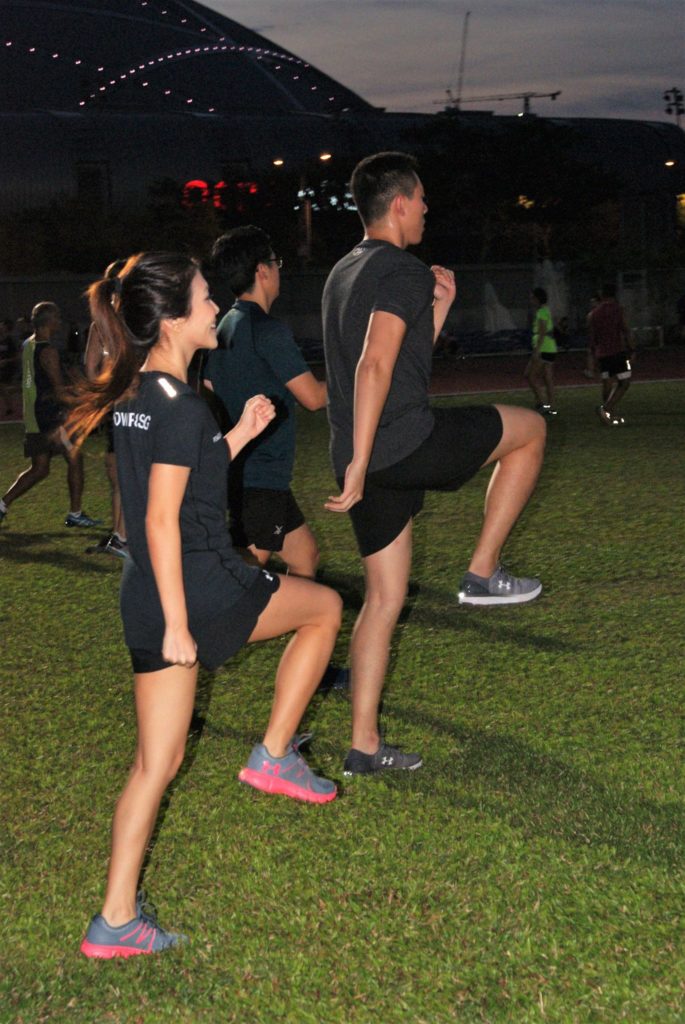
Helps you to run faster in the long term
Doing strength sets on a regular basis, ultimately help you to run faster in long distance races such as the marathon, Ben explained too.
He said, “Strength is very important because nobody is limited by how fast you are. If you can run at your maximum speed for the full distance of the race, you will be a kick-ass runner. But most runners cannot; so the goal is to train the body to run at a high percentage of the maximum speed for the distance of the race.”
Ben added, “This is not about training functional speed, by doing a lot of hard running. Rather it is about burning your aerobic system, burning your fat clearance and getting strong enough so that the muscles are resilient enough to put power to the ground.”
Running a marathon is hard on the body
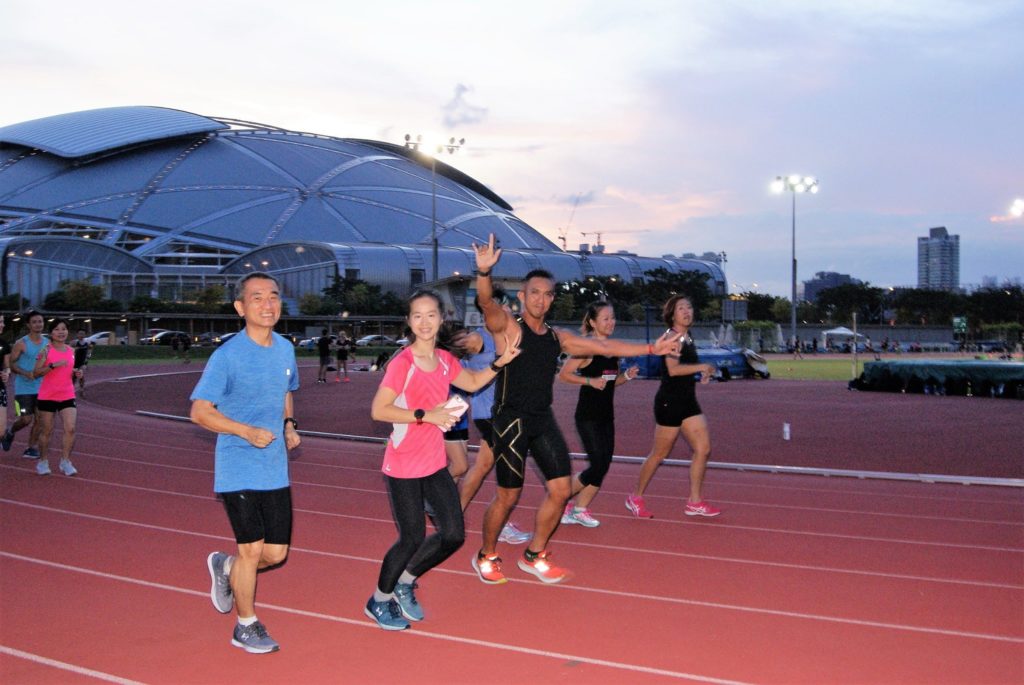
Regardless of how tall or fast you are, Ben stressed that running a marathon is very hard on the body. He explained, “When you run a marathon, you are running 35,000 or more steps; that is a lot of steps and it really smashes the body. So if your muscles are conditioned and you are strong, you will slow down less.”
“So the goal in our training sessions is to smash the legs more than the lungs; we will still hit the lungs because strength sets push your heart rate up. But in between strength sets, do not go overboard on the running intensity; stick to your lower heart rate zones (easy and steady).”
Photos are from Facebook / Under Armour.

Leave a Comment